Denis Shapovalov reached his first career Grand Slam semi-final after a heavy-duty 6-4, 3-6, 5-7, 6-1, 6-4 victory over Karen Khachanov at Wimbledon on Wednesday.
Two of tennis’ most concussive ball-strikers dueled for three hours and 25 minutes on No. 1 Court and it ended with the No. 10-seeded Shapovalov emerging the winner.
In the match which followed on No. 1 Court, Félix Auger-Aliassime seemed positioned to take a two-sets-to-one lead against Matteo Berrettini but the Italian broke serve in the final game of the third set and went on to win 6-3, 5-7, 7-5, 6-3.
It was a tough loss for the No. 16 seed because, after the first set, he was the better player until that break in the final game of the third set changed the whole storyline, leading to No. 7 Berrettini closing out in four sets.
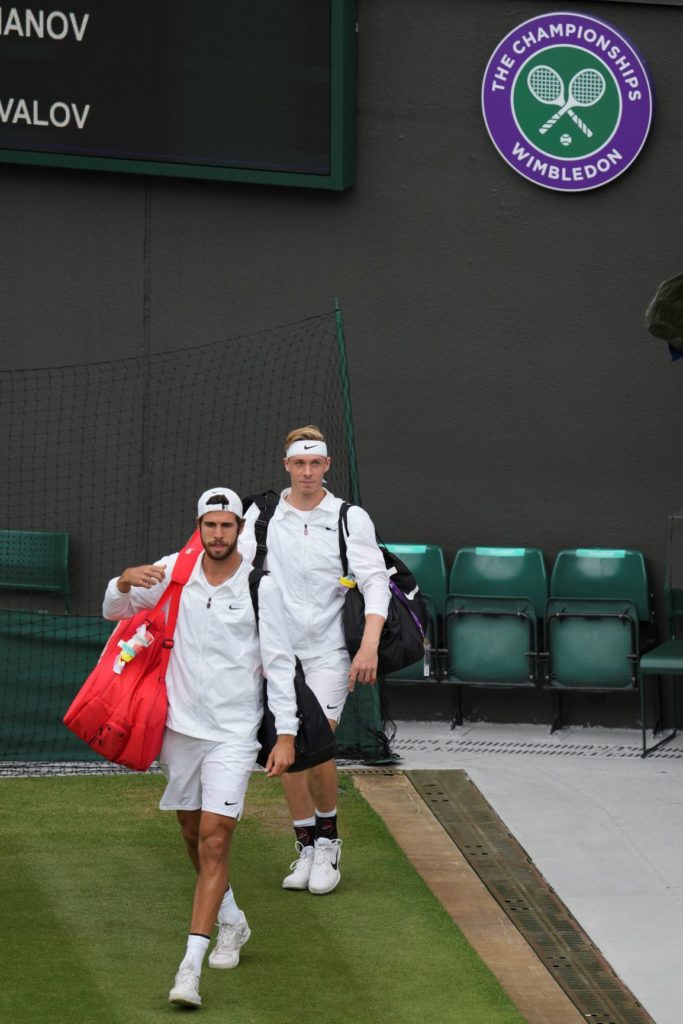
For Shapovalov, the 6-foot-6 Khachanov was unlike anyone he had played to that point in the tournament – basically a guy who hit as hard as he does and who was trying to do to him what he tries to do to his opponents. But while the Russian had the ‘mph’ to stay with Shapovalov in rallies – including a nifty backhand that he can maneuver in interesting ways – he eventually just didn’t have the overall versatility to be able to stay in enough of the rallies.
Shapovalov overcame early nerves to impose his game in the first set but fell away a bit in the second and the 25-year-old Russian capitalized.
The third set was competitive, with Khachanov saving two break points to level at 4-all and then breaking Shapovalov to 6-5. He defended a break point with a bold forehand while serving in the final game before finishing it off when Shapovalov missed wide with a forehand.
That basically was the last time Shapovalov looked vulnerable. He took the fourth set 6-1 with breaks in the fourth in sixth games.
By the final set, Shapovalov was dominating and, even though he missed a golden opportunity when Khachanov served at 2-all, love-40, he finally converted his seventh break point – Khachanov had none in the set – to lead 5-4. He sealed the victory in five points on his own serve when the Russian misfired into the net with a backhand.
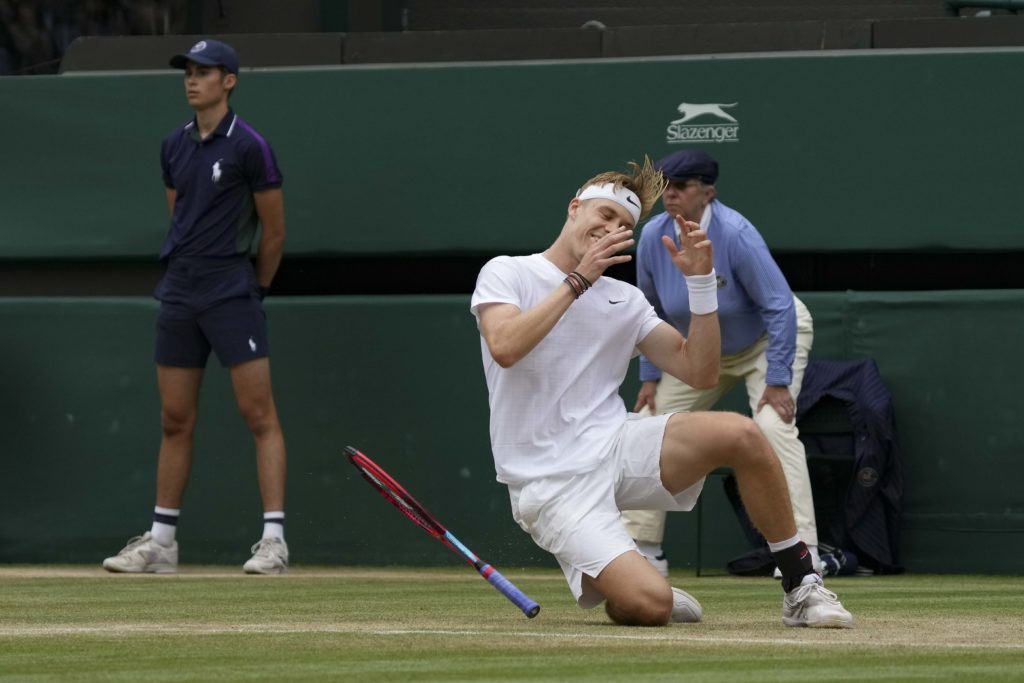
Shapovalov sank to the ground at the moment of victory and soon was saying to the crowd in his on-court interview, “first of all, I have to thank you guys, there were so many times today in the match where I thought Karen was playing just too good and he’s going to roll away with the match. But you guys kept me going, you guys kept me fighting. So thank you so much.”
Heading into the fifth set after that 6-1 fourth set, Shapovalov had a flashback. “I was in a similar position against (Pablo) Carreno Busta at the (2020) US Open,” he said. “I won the fourth set, I think at 6-love or 6-1, really easily. It kind of allowed myself to just, like, relax a little bit and think that everything’s under control…that I have momentum. Then things kind of turned quickly (to a loss). So I knew going into the fifth set I’ve got to leave everything I have on the court for every single point that I play.
“I think my game just elevated. It’s something to be super, super proud of myself for.”
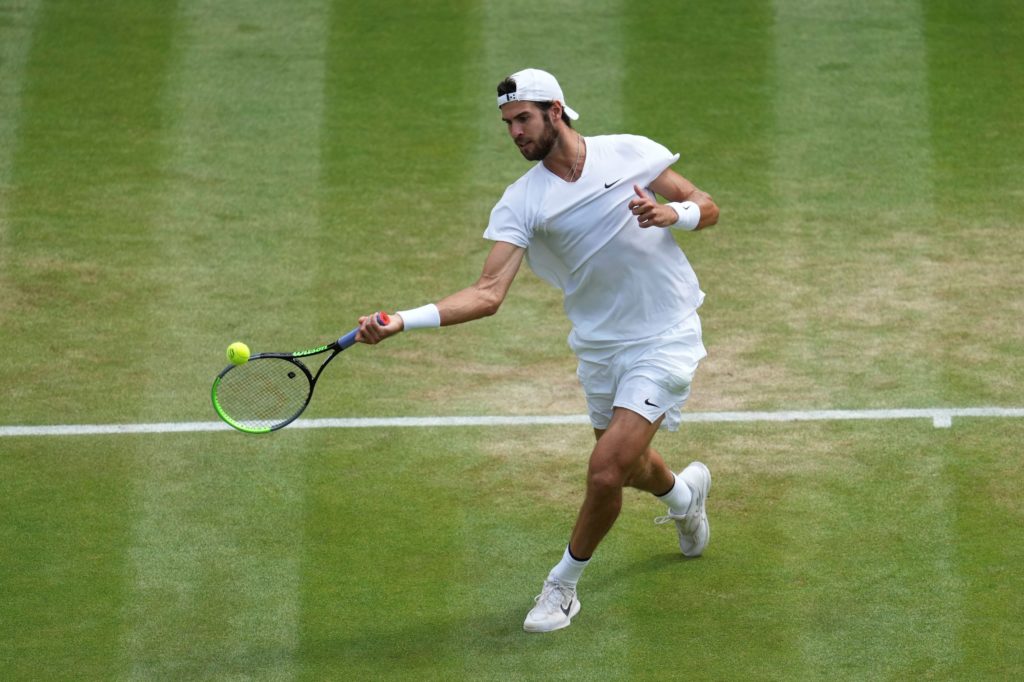
In a duel of major-league ball crushers, the stats looked good for Shapovalov – 59 winners and 48 unforced errors to 31 winners and 50 unforced errors for Khachanov.
“He served much better than me especially in those (big) moments,” Khachanov said. “I think during the whole match – the only thing that I was missing today a little bit better was the serve.”
Shapovalov had 17 aces to just three for Khachanov.
Khachanov summed up about Shapovalov, “he’s a tough player to play because, especially on grass, when he pulls the trigger, he can make it. Sometimes you don’t (know) where to run. He’s a ball-striker.”
Shapovalov credits his mother Tessa with his freewheeling, up-tempo game-style. “My mom always told me later on you’re going to grow and this is going to be an advantage to you,” he said. “It’s something that is yours, you have to keep and maintain it for the future. I think that was massive from her, because I feel like a lot of players, when they’re young, they kind of lose that because even if they have it, they’re scared at that age to get lobbed or lose points. For me, it was great that she had that vision for my game years ahead.”
After Khachanov and his heavyweight game-style, Shapovalov will face the more nuanced but almost other-worldly tennis of world No. 1 Novak Djokovic in Friday’s semi-final.
Asked about it, Khachanov said, “He (Shapovalov) never beat him. I think they never played on grass. Obviously, it depends how he will serve, how Novak returns. I think Novak returns a little bit better than me (smiling). I would like to watch this match to see how Novak would play against Denis and how Denis will play against Novak. It will be an interesting match.”

Shapovalov is 0-6 in matches with Djokovic, stretching from the third round at the 2019 Australian Open to the round-robin portion of the ATP Cup in Melbourne in February. “The last couple times that we’ve played, it’s been really tight,” Shapovalov said about facing the five-time Wimbledon champion. [That includes 4-6, 6-1, 7-6(4) and 7-5, 7-5 at the last two ATP Cups.] “I’m feeling really good. I’m feeling great physically and tennis-wise. Obviously, he’s been playing really well. It’s definitely a tough battle ahead of me. Like I said, when you walk out on that match, the score is 0-0. It’s a tennis match. Anything can happen. I’m going to fight for every point and believe in myself. I do believe that I have the game to beat him and the game to win that match.”
Djokovic, 34, offered an unusually comprehensive scouting report on Shapovalov, saying “he has been consistent with success on the tour in the last couple of years, top 20, top 15 in the world, although people did expect him to probably going to top 10 or maybe top 5 and be one of the leaders of the Next Gen, which he is. Maybe big matches, he was not winning those in the last couple of years. It seems like he’s maturing, which is also something that is normal, it’s logical. You would expect that from a player like him that has really an all-around game. Huge serve, lefty, which is always tricky to play someone who is left-handed on the quick surfaces. He’s comfortable coming in to net. I think his movement has improved. Due to better movement, he’s probably making less errors, which was probably the part of his game that was always troubling him.”
With due respect to the other two semi-finalists – Hubert Hurkacz and Berrettini – Shapovalov, 22, has a higher performance ceiling, on his day, than either of them and is probably the greatest obstacle remaining between Djokovic and a sixth Wimbledon and 20th overall Grand Slam title.

It was a frustrating loss for Auger-Aliassime because he put more pressure on the Berrettini serve during the match – the 25-year-old Italian played 26 more points on his serve during the match (136 to 110) than Auger-Aliassime. But it ended up with the key being the outcome of the third set.
Auger-Aliassime is a natural, smooth-flowing player, while Berrettini’s style seems more manufactured by comparison, relying on the brute power of his serve and forehand.
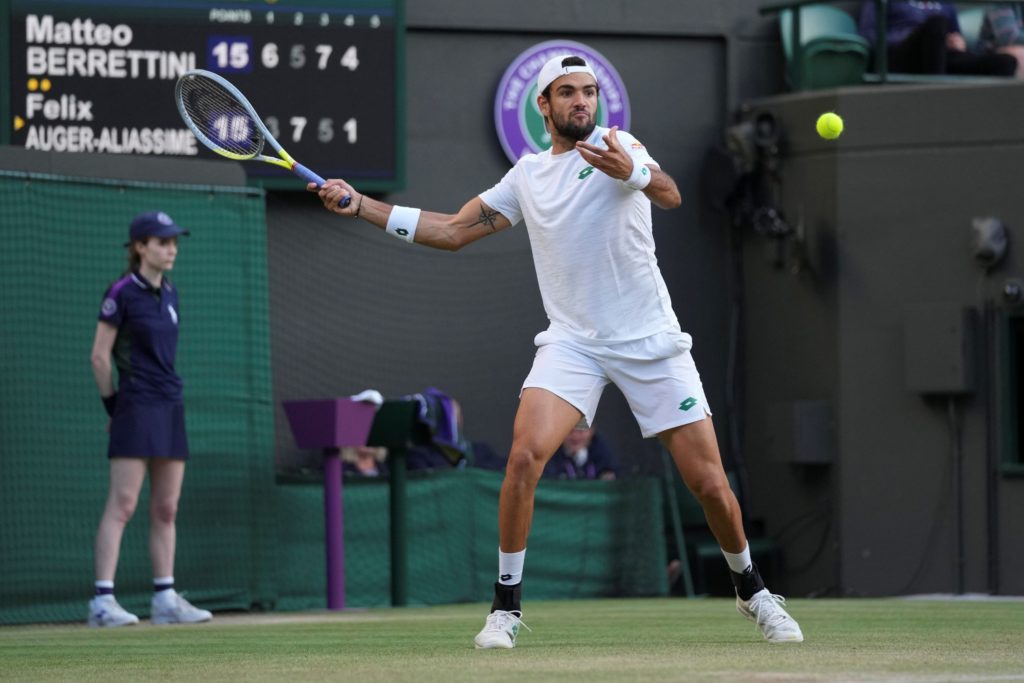
After a slow, nervous start to the match, Auger-Aliassime served and played better from the baseline in the second and third sets against a Berrettini who seemed somewhat edgy and unsure. But though he had won his serve more easily than Berrettini throughout the third set, in the 12th game Auger-Aliassime missed a forehand on the opening point and hit a double fault on the third. That created the opening for Berrettini and he won the final two points with a running forehand passing shot that Auger-Aliassime couldn’t handle and an approach to the backhand that led to a miss on the passing shot by Auger-Aliassime. It was the vital service break Berrettini desperately needed.
That was the ultimate momentum shift of the match and Berrettini carried it over to a break of serve in the second game of the fourth set. It was all the Italian needed, wrapping up the set (and the match) without facing a break point.
“There were times in the second and third where I felt like I could put my racquet on most returns and I was making him play,” Auger-Aliassime said about facing the Berrettini serve. “I felt like the pressure was on him. I was winning my service games easier. I had more chances on his.”
About the fateful turning point of the match, Auger-Aliassime said, “I think in the third set at 5-all, it was deuce and I missed this backhand in the net. I just felt like I had a little bit of the rhythm, a little bit of the edge. From there he won five games in a row. So I think the end of the third and the beginning of the fourth is where I lost the match. I played a poor game on my serve. He made some good shots. After the fourth when I started (poorly) like this, he served better and better. He was more relaxed. I was trying to stay, to fight, to find a way, but it was a bit too late.”
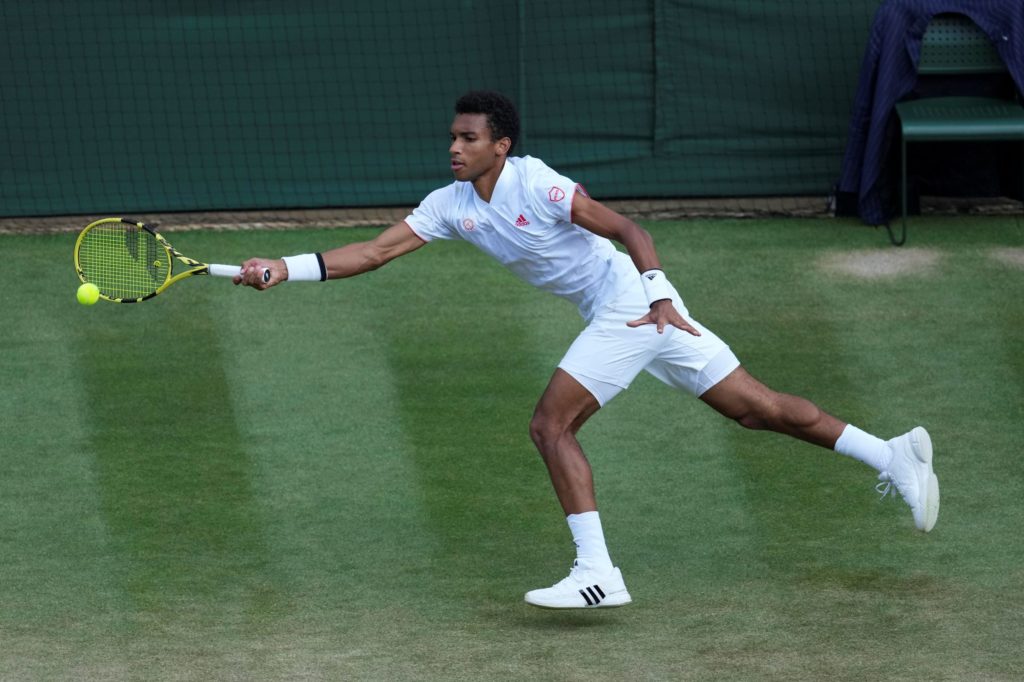
While it would have been nice to have both Shapovalov and Auger-Aliassime in the Wimbledon semi-finals, Canadian tennis fans should fully enjoy the unparalleled success of this generation and this moment – probably made no clearer than in the following up-to-date live ATP rankings of the top Canadian and American players.
No. 10: Denis Shapovalov No. 33: Reilly Opelka
No. 15: Félix Auger-Aliassime No. 34: John Isner
No. 22: Milos Raonic No. 40: Taylor Fritz
Decades ago with the endless series of great American champions such as Stan Smith and Arthur Ashe, Jimmy Connors and John McEnroe and Pete Sampras and Andre Agassi dominating the sport – and Canadians just struggling to get a player into the top-50 – the idea of three Canadians out-ranking the best that the United States has to offer would have been preposterous.
FROM THE ARCHIVES
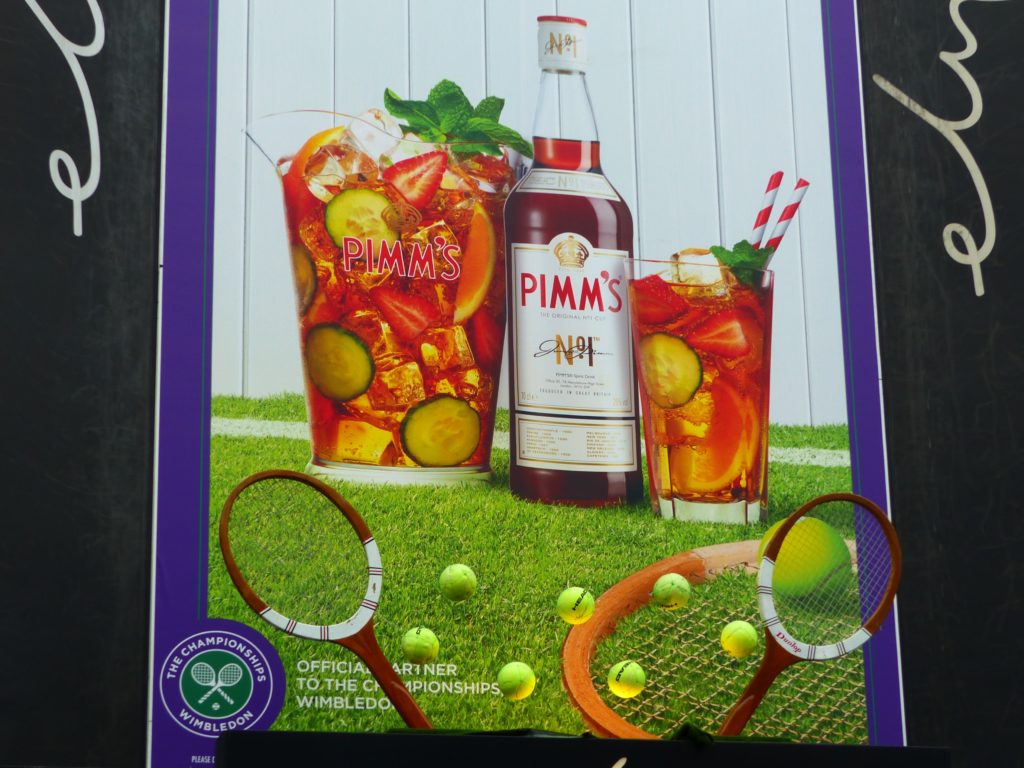
PIMM’S is the traditional drink of Wimbledon – it consists of gin-based Pimm’s liqueur with lemonade and fruits.
Feature Photo: Martin Sidorjak






